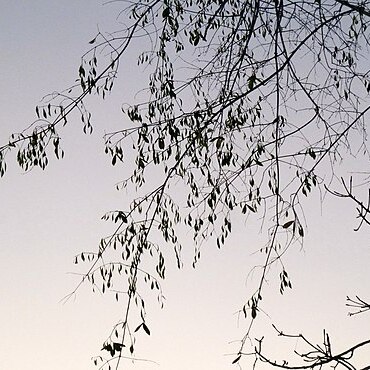Tall unarmed lianes or scandent shrubs; older stems normally terete, with pale yellow wood. Latex usually absent (present in P. graciliflora subsp. newalensis). Leaves opposite or subopposite, petiolate; blade toothed, sometimes finely so, or occasionally entire. Stipules small, free, with at least one prominent very acute tooth. Inflorescences of paired axillary dichotomous cymes with no accessory branches, sometimes forming a terminal panicle. Flowers small, pedicellate, 2–6 mm. in diameter; buds globose to ovoid. Sepals 5, with quincuncial aestivation, equal or unequal, entire or ± denticulate. Petals 5, with quincuncial aestivation, sessile or rarely slightly unguiculate, overlapping in the bud stage. Disc reduced, annular or cup-shaped, produced around the base of the ovary, sometimes lobed between the petal bases, the filaments attached directly to the disc without an androgynophore. Stamens 3, small; anthers dehiscing by a transverse slit; pollen very small, simple, tricolporate. Ovary half sunken below the point of attachment of the filaments, trilobed with 3 locules, each with 4–10 ovules; style with a punctiform stigma or ± trilobed. Fruit of 3 flattened mericarps, each of which dehisce by median sutures into 2 caducous valves. Seeds winged, the wing with a marginal and a submedian vein (the raphe), inserted in a series of compressed triangular pocket-like structures at the point of attachment; cotyledons united; ovules with no conspicuous features.
Lianas or small shrubs with scandent branches, glabrous throughout; branches opposite, lenticellate. Leaves with tertiary veins orthogonally reticulate, prominulous on both surfaces, often yellowish. Inflorescences axillary, generally densely flowered, corymbose, (pseudo-) dichotomously branched; bracts and bracteoles small. Flowers small, 2-5 together at the end of the ultimate branchlets; sepals 5; petals 5, spreading or erect; disk very low, forming a round or slightly angular low cushion around the ovary, without or with a free upper margin; stamens 3, filaments deltoid, suberect or extrorsely reflexed, anthers transversely ellipsoid, dehiscing by extrorse, transverse, confluent clefts; ovary depressed-trigonous, 3-lobed, ovules 2-10 per locule, superposed, style short, ending in a stigmatic shield or with 3 minute stigmas. Infructescences with several fruits. Fruits capsular, with 3, divergent, erect mericarps, separately attached to a hardly swollen receptacle. Mericarps flattened on both surfaces, dehiscing along an unobtrusive median suture, pericarp thin-coriaceous; seeds erect from the base, affixed by a large, papery, basal wing, embryoniferous part as long as or shorter than the wing, leathery.
Woody lianas, glabrous or puberulent; branches terete to quadrate, internodes slightly dilate, lenticellate. Leaves opposite or subopposite, entire or serrate. Inflorescences axillary, rarely terminal, cymose, rarely thyrsoid. Flowers bisexual, 5-merous, light yellow. Disk fleshy, inconspicuous, annular or cupular, extrastaminal. Stamens 3; anthers transversely dehiscent, extrorse. Ovary compressed, triangular, 3-locular; ovules axile, 2-6 per locule, binate or imbricate from apex to base per locule. Fruits commonly 3-fascicled capsules or degenerating into only 1 capsule; capsule transversely flattened, thinly leathery, grooved, loculicidally dehiscent. Seeds 2-6, with membranous basal wing, conspicuously 1-grooved at middle, exalbuminous.

